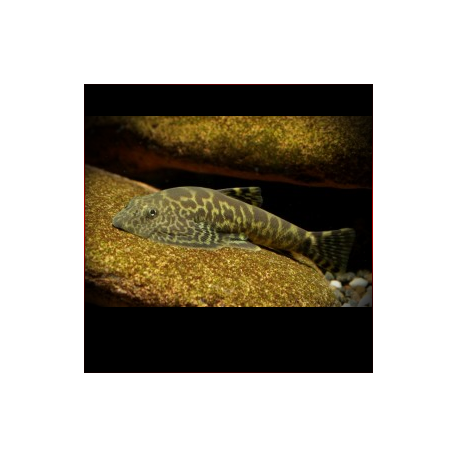More info
Datasheet
| Minimum Tank Size | 80 litres / 21.13 US gallons |
| Maximum Size | 7.5cm / 2.95inches |
| Temperature | 20°C / 68.00°F - 24°C / 75.20°F |
| Hardness | 1.01dgH / 18ppm - 10.03dgH / 179ppm |
| pH | 6.0-7.5 |
General Description
Sewellia Elongata, commonly known as elongate hillstream loach, is a member of the Gastromyzontidae family. It was identified in the aquarium trade in 2010 and stands out as the largest known Sewellia species, growing up to a length of 7.5 cm. This species exhibits an elongated body shape without dark stripes and possesses distinctive fin characteristics and scales on the lateral line series.
Aquarium Setup
When setting up an aquarium for Sewellia Elongata, a minimum tank size of 80 liters is recommended. The water should be clean, well-oxygenated, and have a pH range of 6.0-7.5, hardness between 18-179 ppm, and a temperature of 20-24°C. It is imperative to have a mature aquarium with ample algae-covered rocks and surfaces. Driftwood and aquatic plants like Microsorum, Crinum, and Anubias can be added, providing additional cover and grazing areas. Regular water changes are crucial, and the tank must have a secure lid due to the species' climbing ability.
Behaviour
Sewellia Elongata is known for its dominance within the 'sucker belly' loach group, displaying territorial behavior, particularly around feeding spots. Males are usually dominant and engage in belly-to-belly dominance battles, entertaining to observe. In the aquarium, they coexist well with compatible tankmates like small cyprinids, stream-dwelling gobies, and rheophilic catfishes. The species thrives in larger, structured tanks where they can exhibit their natural aggregative behavior.
Feeding and Diet
In their natural habitat, Sewellia Elongata primarily feeds on benthic algae and micro-organisms, occasionally consuming insect larvae opportunistically. In captivity, a diet rich in fresh vegetables, Spirulina, and homemade gelatin-bound foods is recommended. Providing an environment with algae-covered surfaces and growing algae in a separate tank can ensure a sufficient food supply. Fry require smaller food items like Infusoria and Artemia nauplii before transitioning to larger options.
Reproduction & Dimorphism
Breeding Sewellia Elongata in captivity is relatively straightforward, with successful attempts reported in various setups. Suitable breeding conditions include mature substrates with rounded river gravel for egg development and fry refuge. Courtship involves male displays and spawning in open water columns. Fry exhibit distinct morphological differences from adults, with developing barbels and shorter fins. Sexual dimorphism is observable in body and head shape, with males displaying soft tubercules on the pectoral fins.
Habitat and Distribution
Native to the upper Xe Nam Noi and Xe Pian rivers in southern Laos and central Vietnam, Sewellia Elongata thrives in fast-flowing, oxygen-rich waters with rocky substrates. The Bolovens plateau, characterized by riffles, runs, and pools, offers an ideal habitat for these loaches. The species prefers clear, biofilm-rich environments surrounded by riparian vegetation. It coexists with various fish species, such as Poropuntius, Cyprinion, Glyptothorax, and Clarias, in its natural range.

